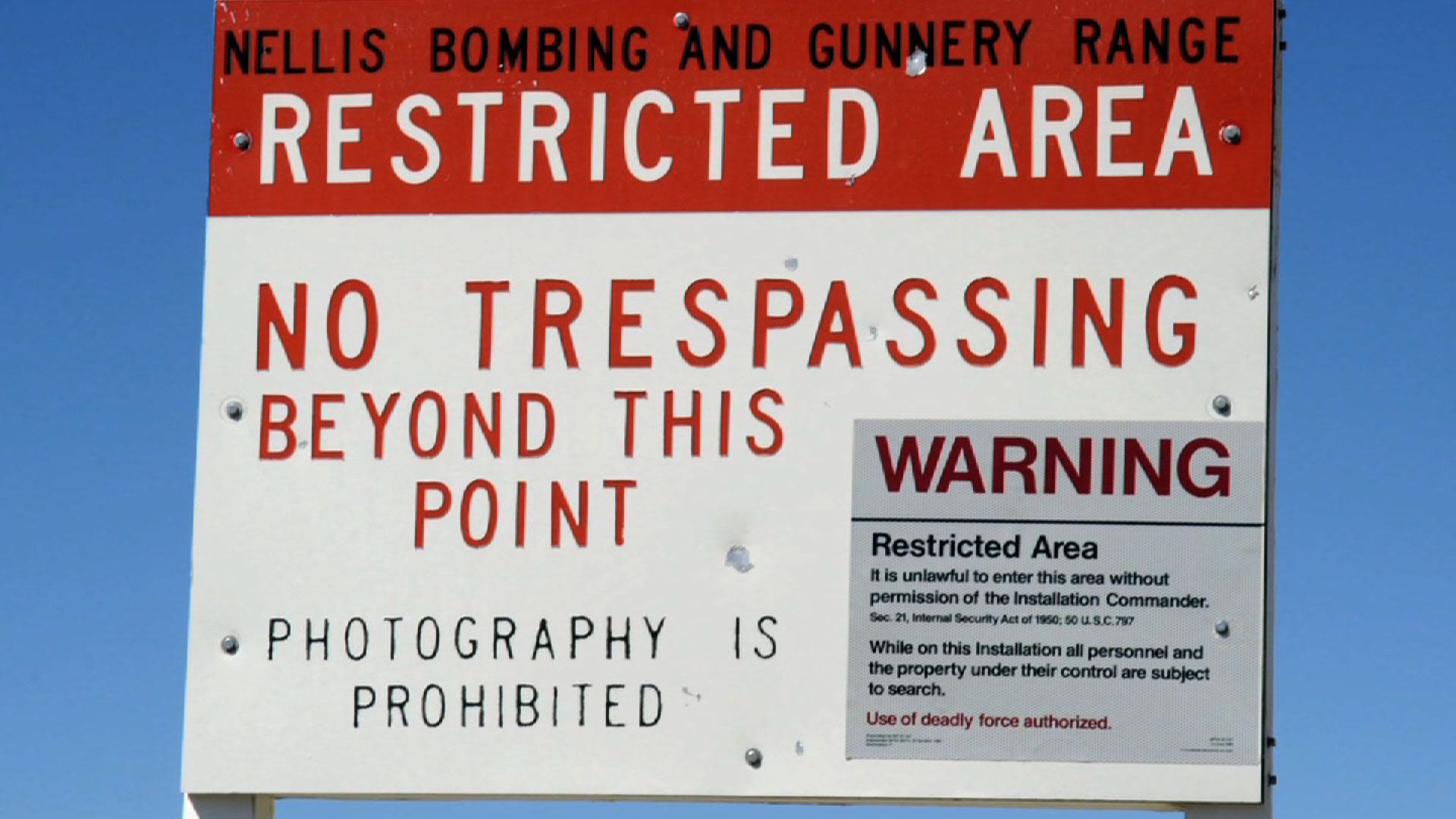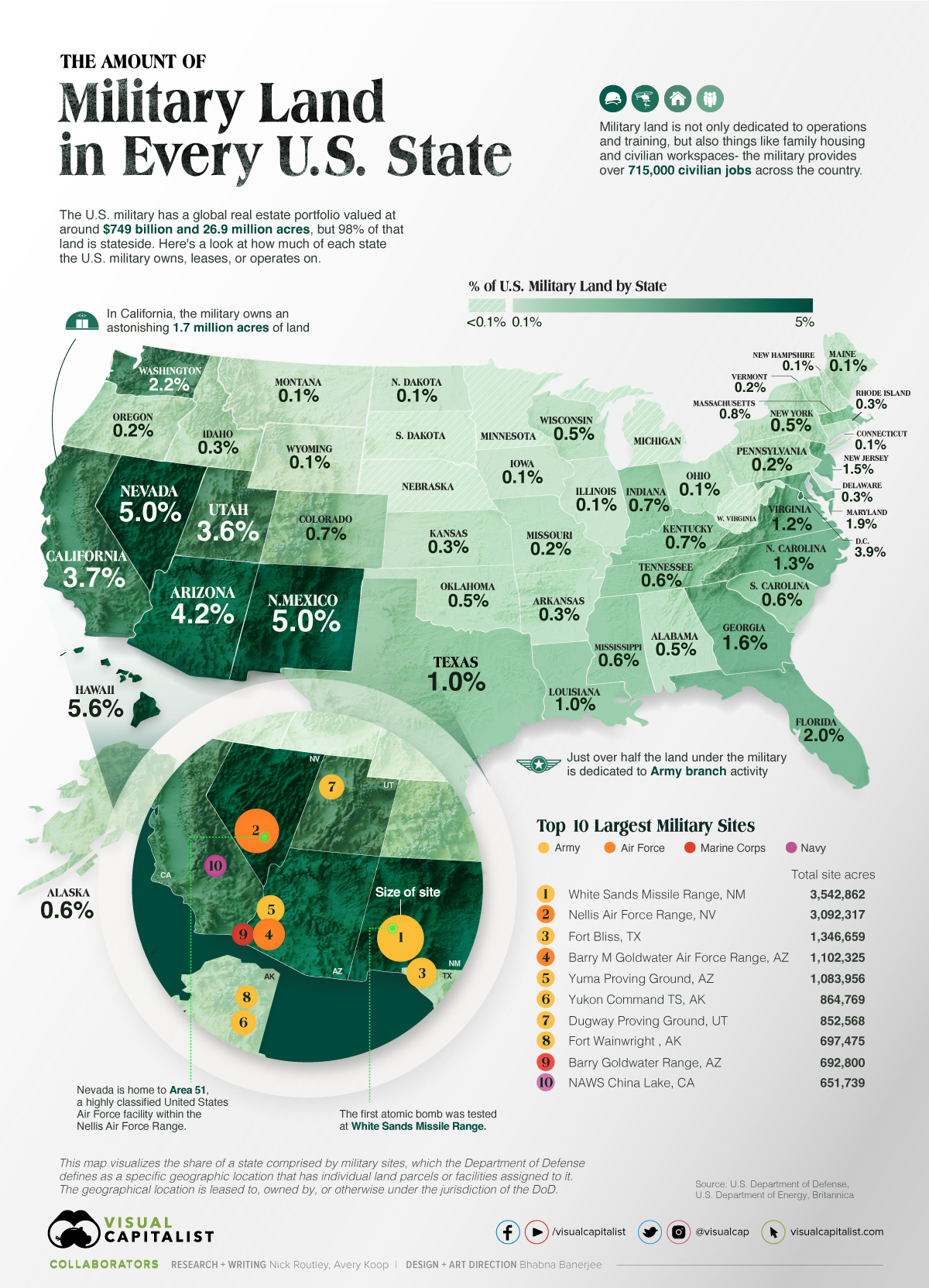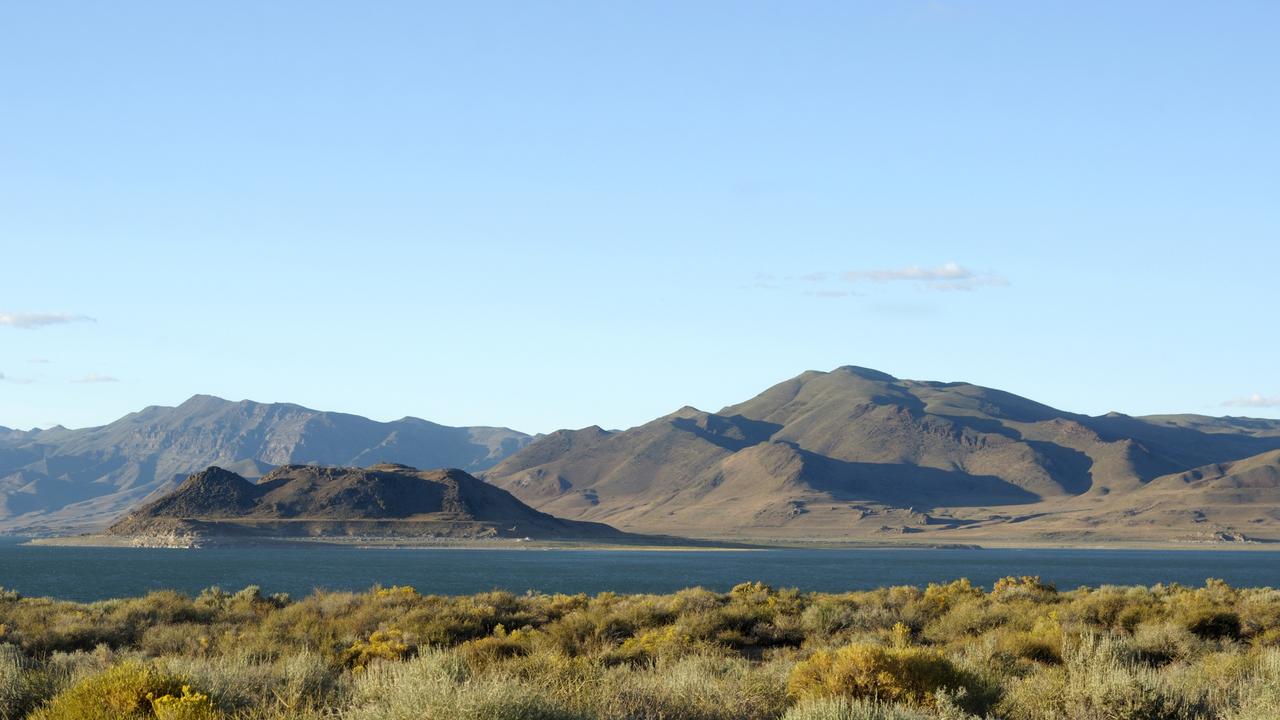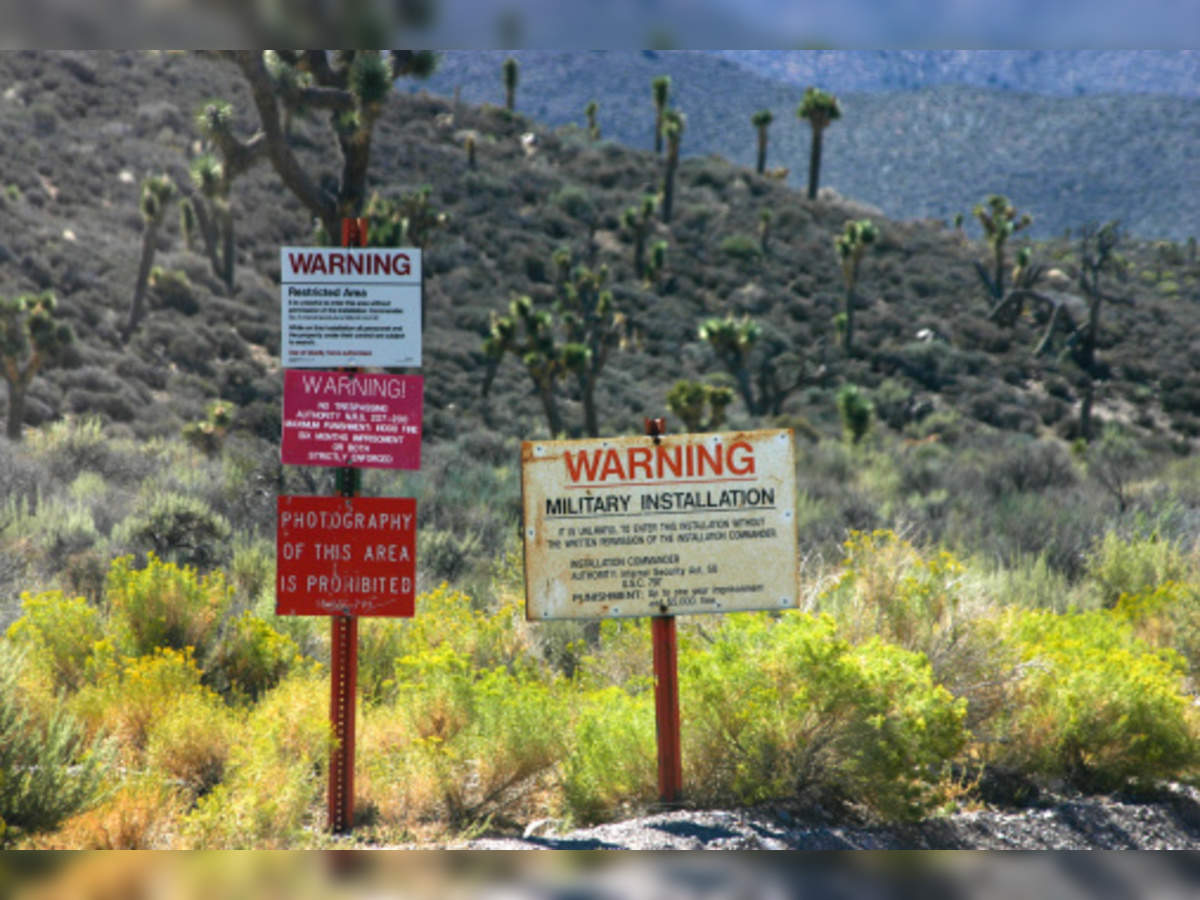Military Bases Nevada - "Las Vegas Army Airport" relays here. For the 1941-49 Las Vegas Bombing and Artillery Range, see Las Vegas. Nellis Air Force bombing and artillery range. For the 1956-70 Radar website, see Las Vegas Air Force Station.
Nellis Air Force Base (hereinafter referred to as "Nellis") is a U.S. Air Force base in southern Nevada. Nellis hosts air combat exercises such as the Red Flag exercise and pro-air support exercises such as Gre Flag-West, which are flown in the "Military Operations Area (MOA) airspace".
Military Bases Nevada

Connect with the nearby Nevada Test and Training Area (NTTR). The base also has Cter-Nellis integrated air and space operations.
Nevada Test And Training Range
For the name of this base, the KIA in the 1944 European Theater, see. Lieutenant William Nellis I
After World War I, Nevada and other western western states were explored by Captain Lowell H. Smith and soldiers. William B. Whitefield and "By mid-1925, the Air Service had information about about thirty-five hundred landings, including more than twenty-eight hundred emergency landings in the United States."
North of Las Vegas - 1925 Western Air Express for Contract Air Mail (CAM) Route # 4, 1929 Airport operated by LA-to-SLC (dirty runways, wells and small operations) is used by Army Air. For flight training in the 1930s for the unit. After the Polish invasion of 1939, the "formed western zone" deployed the southern part of Nevada "near Tonopah, Nev" in April 1940 for military contingent.
And in October 1940, Air Force Commander David Schlatter conducted a survey in the southwestern United States for a military airport.
Nevada Military Bases History And Locations
"60 × 90 miles in Tonopah was transferred to the War Department on October 29, 1940."
It should not be confused with the 1942 "Alamo Airport" south of Las Vegas and was named after Sator McCarran in 1948.
There are "difficult to use" airspace north of Las Vegas for Nevada WWII Air Force Base.
McCarran Field was acquired by Las Vegas on January 2, 1941, leased to the Army on January 5, and "signed" to the Quartermaster Corps on January 25 - Army construction began this month. March 1941.
Continuing Evolution: 75 Years Of Nellis History > Nellis Air Force Base > News
The city's federal building became the site of the disbandment of the 79th Air Force Base in May 1941 (five personnel under the command of Lieutenant Colonel Martinus Stseth), and a month later five administrative NCOs and other auxiliary personnel were evacuated. Arrive.
The WPA Fortress in Las Vegas is used for registration, and the engine compartment with six old cars and a semi-trailer is attached. Will WPA Fortress. Auto parts were refueled and refueled by local service stations and civilian guards.
Permanent construction of the 3,000-strong fort began in mid-1941, and on December 7, 10 AT-6 Texan advanced flight instructors and 17 Martin B-10 bombers arrived at the airport.
In 1942, when Tonopah Army Airfield began operations in August 1942, Las Vegas Army Airport had three runways (Tonopah Bombing Field was split in 1941 into Tonopah and Las Vegas Geral Ranges).
Nevada State Map
Many pieces of drone targets were destroyed around the northern slope of the artillery range and could be seen in the city as the sun was reflecting on them.
The first B-17 Flying Fortresses arrived in 1942, and at the height of the war allowed 600 artillery fire from the field and the training of 215 co-pilots every five weeks. More than 45,000 B-17 gunmen have been trained. USAAF training film The Rear Gunner was shot at the airport in 1943.
The 82d Flying Training Wing was launched on August 23, 1943 as the Army Training Flight Wing.
In 1944, artillery used B-17, B-24 Liberator and B-40 Flying Fortress fighter jets (for example, by firing on a dragging target).
Suv Flees Cops, Takes Out Navy Fighter Jet
In March 1945, the base switched to B-29 artillery training, which included a ground trainer with a shotgun.
Subsequent populations reached the top officials and staff of about 11,000, of which more than 4,700. Flexible artillery training was given in September 1945.
And the base became a training center for the departure of soldiers and the final payment. Instead, pilot, bomber and radar training planned for the LVAAF was started at Mather Army Airfield in June 1946.
The AAF Training Command shut down the LVAAF, which was on standby on August 28, 1946 ("officially closed in January 1947").
Pilot's Rare Trip Around Area 51 Includes Pics Of Range Targets, Drone Bases, Ufo Legends
During the planning of the separate Air Force Las Vegas AAF was reactivated "as a sub-installation of Mather on August 30, 47".
3525, which began operations on February 11, 1949.
For the Nellis Air Force artillery line and bombings named in December. Nevada Test and Training Range.

Nellis Air Force Base was named April 30, 1950, and a dedication on May 20, 1950, was made by the family of Lieutenant Nellis.
Want To Work At Area 51? Now You Can As World's Most Mysterious Military Base Posts Its First Ever Job Advert…. But There's A Bit Of A Catch
On July 1, the Air Force led the ATC to increase Korean War training for the new 95th Airborne Wing. The Nellis and ATC Primary Schools have redefined the 3595th Pilot Training Wing (Advanced Single Guinea) as the 3595th Training Wing (Combat Team).
On July 17, 1950, Nellis initiated a reserve pilot training program to provide 115 FEAF F-51 Mustang pilots and 92 ready-made F-80 Shooting Star pilots. Nellis Advanced Advanced Single Engine Driver Training was transferred to Alabama on September 1, 1950.
Nellis received bomber training, and ATC established the USAF Air Crew School (The Fighter) on November 14, 1950, equipped with F-80s and older F-84C Thunderjets. On October 1, Nelli's AFB local management function was handed over
In early 1951, ATC handed over the graduated aircraft and mechanics directly to Nellis for aircraft maintenance training.
Fort Churchill Nevada, Usa. Ruins Of An Abandoned Army Base Circa 1860`s Stock Image
The airport was expanded from 1951-1954 with longer runways, reconfigured taxi lanes and a larger airport. And II. World War II timber constructions were replaced by concrete and steel structures (for example, forts and housing for married staff). The first Wherry House was completed in 1954, and the updated Capehart House was completed in February 1960.
Once the Air Crew School has completed its final Combat Crew training course (its main weapon school assignment is rifle instructor training).
In the mid-1950s for Operation Teapot nuclear test, 1 in 12 Area Commanders was at Nellis Air Force Base for Community / Public Relations.

The Air Training Command suspended training at the Nellis Combat School in late 1956 due to almost complete failure.
Abandoned U.s. Military Training Site In The Middle Of The Nevada Desert
And the Nellis mission shifted from basic aircraft skills training and gun training to higher level weapons training. Shortly after the transfer to TAC, an inventory of the F-100C, F-100D and F-100F cabin cabinets was released. On April 21, 1958, an F-100F on a training flight from Nellis participated in a mid-air collision with United Airlines Flight 736. All 47 people on board and two air force pilots on board were killed.
The 3595th Wing Assets were redefined by the TAC on July 1, 1958 as the 4520th Combat Training Team.
4536. Nellis control tower on the rear of the F-100D (extension number "WB"). In July 1968, the first tail code appeared on Nellis-based aircraft:
The 4520th Combat Training Corps was designated from CCTG 4520 on 1 May 1961 and the Combat Training Corps was numbered.
Area 51 Fast Facts
The 4537th Artillery Battalion was assigned to the F-105D Lightnings in March 1961, and the wing trained experienced pilots in all stages of the use of combat weapons: artillery, air to rocket, conventional bombing. And nuclear, air-to-air refueling. And combat exploration. F-4 Phantom II teacher training begins in mid-1965
And during the Vietnam War, experienced fighter pilots were used as combat weapons instructors in Nellis. On January 1, 1966, USAF Armament Academy was activated in Nellis with the F-100, F-4, and F-105 divisions. The 4520th CCTW merged into the activated 4525th Fighter Weapons Wing.
The USAF Strategic Weapons Center, which began operations on January 1, 1966 at the Nellis AFB (USAF Warfare Center after November 15, 2005), is the USAF mandate to use tactical weapons.

The Center develops, refines, coordinates, approves and tests fighter jet concepts, doctrines, strategies and procedures. The FWC also tests and evaluates operations, and produces or oversees Air Force publications on work strategies, crew training, and pilot weapons. The U.S. Air Force Combat School oversees enemy tactical and Wild Weasel training courses, as well as other combat and tactical training schools.
Fallon Range Training Complex
The FWC oversaw red flag operations training and other subsequent air exercises such as the Gre Flag and Silver Flag Alpha. The center has also operated U.S. Air Force bomber and tank operations, recruiting schools since 1992, and the Air Rescue Center since 1993.
The U.S. Air Force, Thunderbirds, and USAF Demonstration Squadron relocated from Arizona to Nellis AFB in June 1956.
Six F-111As left Nellis for Vietnam on March 15, 1968 (Combat Lancer). Nellis replaces two missing F-111s and F-111 returns to US
The 428th Fighter Wing Squadron with F-111s arrived at the IOC in the spring of 1968, and the TFW was fully operational in July 1971.
Why Area 51, The Top Secret Military Base In Nevada, Is All Over The News?
Lake Mead Base, 1953-6, US Navy's 2,832-hectare weapons depot
Military drone range, laser range finder military, military range bags, military range targets, long range military radio, military radio range, military range finder, military long range binoculars, range rover military discount, military range rover, range of military drones, military range bag


0 Comments